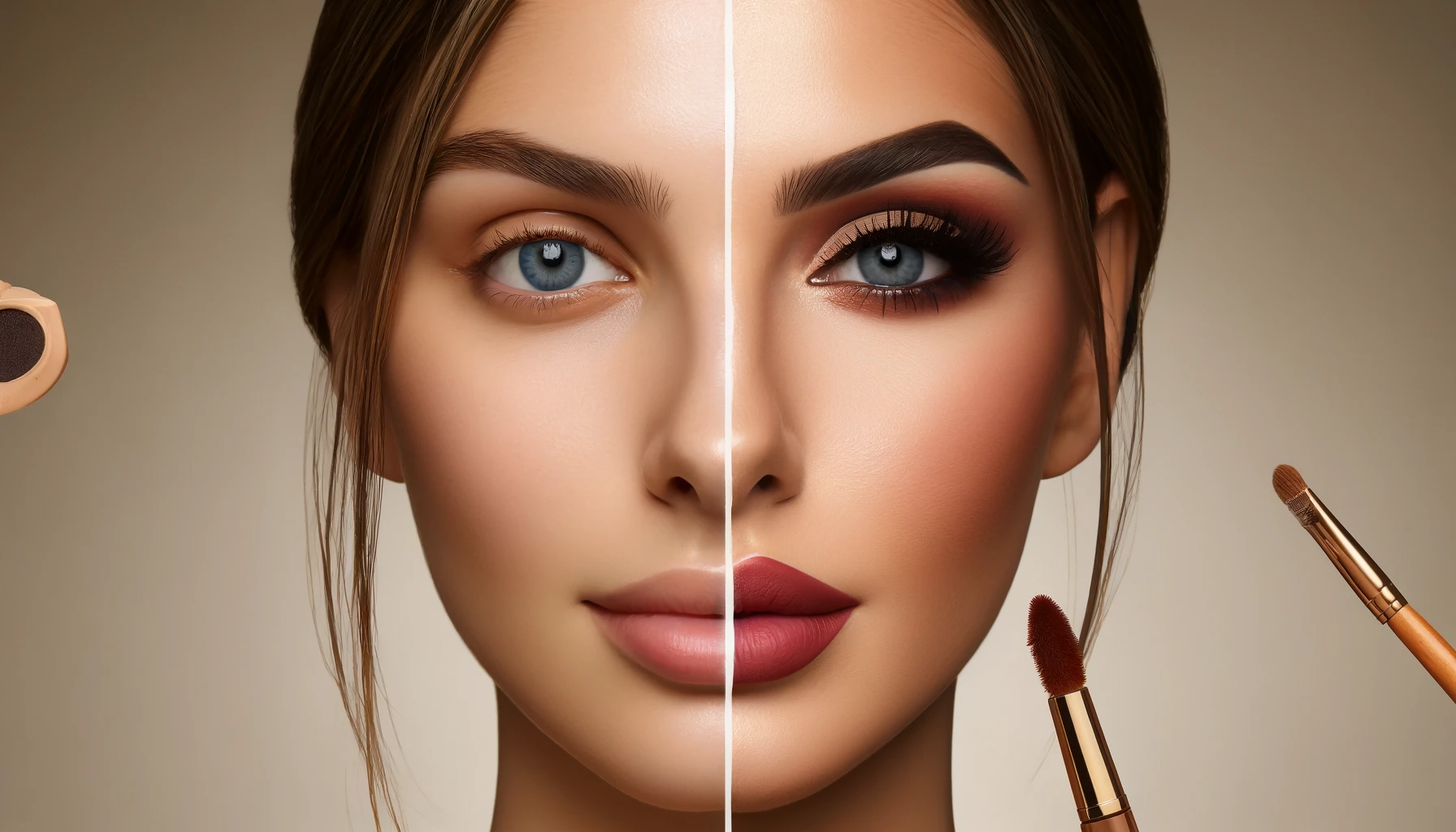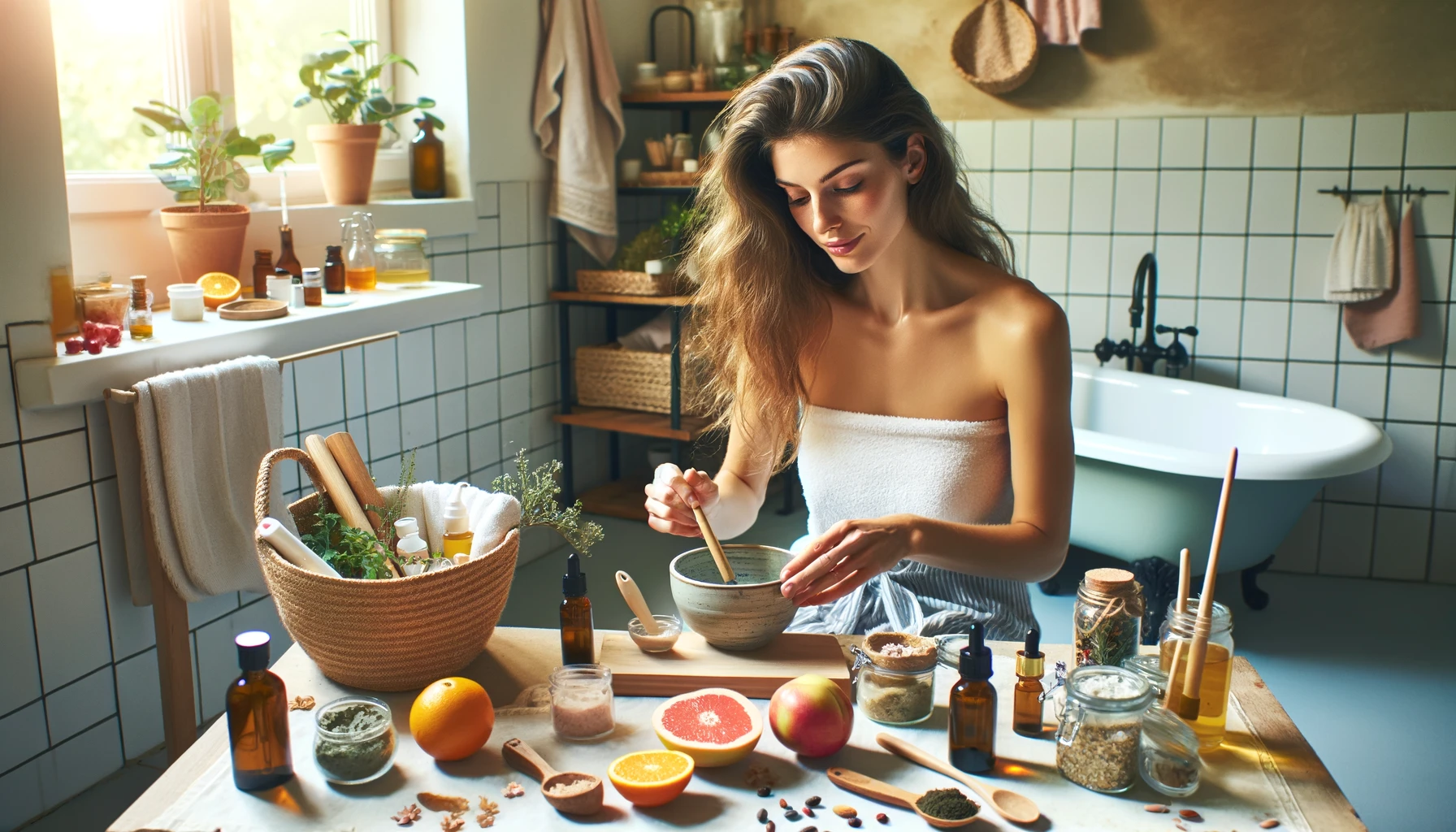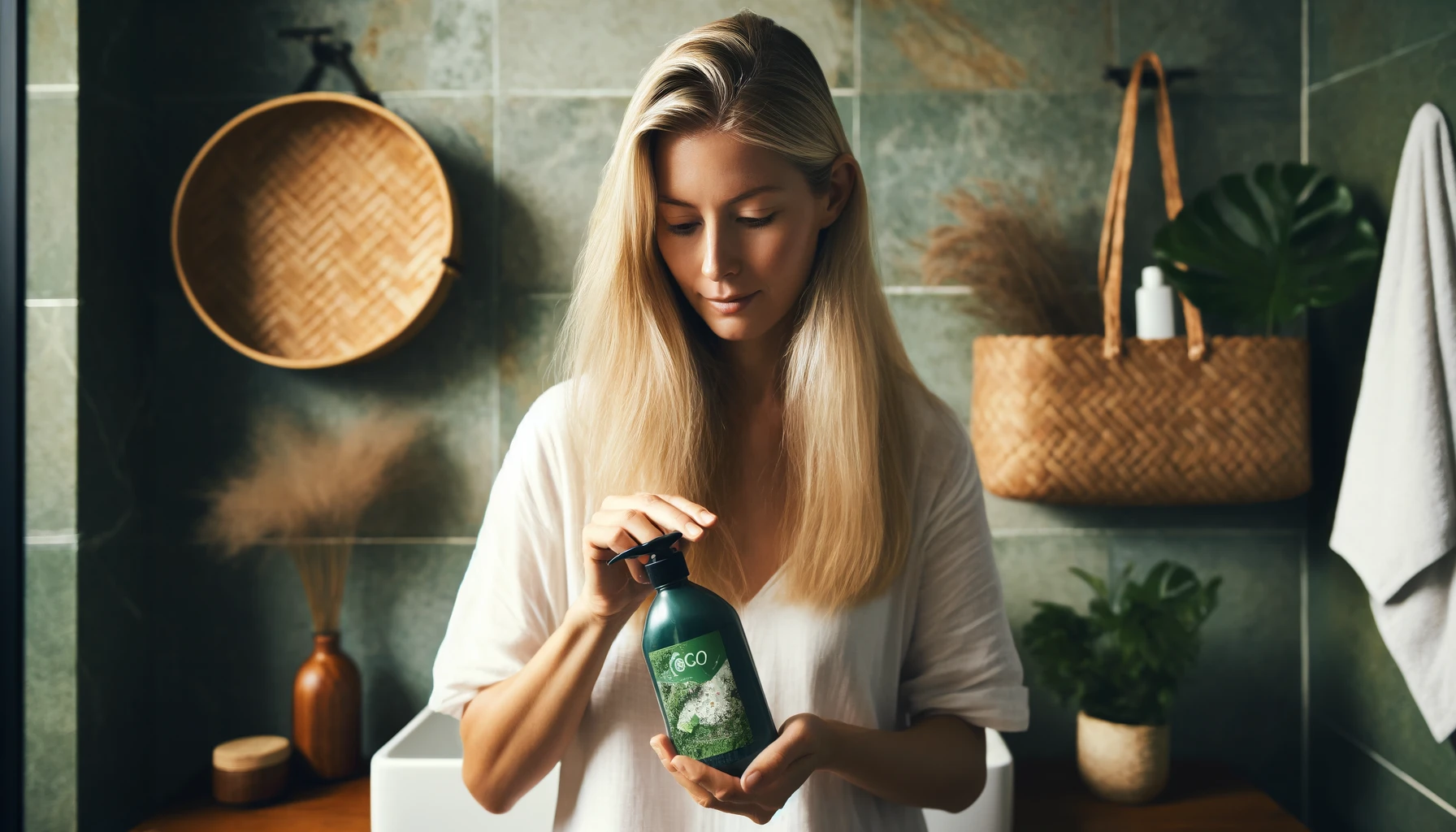
Exclusive Beauty Discoveries: Unveiling the Latest Trends
Discussing the Rising Demand for Exclusive Beauty Products and Trends in the Market
With increasing globalization and easy access to information, consumers today have developed a growing desire for exclusive beauty products. This trend can be attributed to several factors that have influenced the beauty industry in recent years.
Social media’s influence: One significant factor behind the rising demand for exclusive beauty products is the influence of social media. Platforms like Instagram and YouTube have allowed beauty influencers and bloggers to share their experiences and recommendations with millions of followers. This exposure to different products and trends has sparked the curiosity of consumers, leading to a desire for more exclusive and unique beauty offerings.
Importance of personalization: Another driver behind the demand for exclusive beauty products is the increasing importance of personalization. Consumers today are seeking products that cater specifically to their individual needs and preferences. This desire for customized experiences has led to the rise of beauty brands that offer personalized skincare regimens, color-matching technologies for foundations, and the ability to create customized lipstick shades, among other innovative offerings.
Desire for unique experiences: In addition to personalization, consumers are also seeking unique experiences in the beauty industry. They want products that stand out from the crowd and provide something different from what is commonly available. This desire for exclusivity and uniqueness can be observed in the increased popularity of limited-edition beauty collections, collaborations with influencers, and niche brands that offer specialized and hard-to-find products.
Overall, the rising demand for exclusive beauty products can be attributed to the influence of social media, the importance of personalization, and the desire for unique experiences in the beauty industry. As consumers become more informed and connected, their expectations for exclusive and tailored beauty offerings will continue to drive trends in the market.
Examine the Concept of Clean Beauty and How It Has Gained Popularity
The Rise of Clean Beauty
In recent years, there has been a significant increase in consumer awareness and demand for clean beauty products. Clean beauty has become a major trend as consumers have become more conscious about what they put on their skin.
Natural and Organic Ingredients
One aspect of clean beauty revolves around the use of natural and organic ingredients. Consumers are seeking products that are free from harsh chemicals, artificial fragrances, and preservatives. They are drawn towards ingredients like plant extracts, essential oils, and botanicals, which are believed to be safer and more beneficial for the skin.
Cruelty-free and Vegan Products
Another important aspect of clean beauty is the emphasis on cruelty-free and vegan products. Consumers are increasingly concerned about animal rights and are actively seeking beauty products that have not been tested on animals and do not contain any animal-derived ingredients. Beauty brands have responded to this demand by certifying their products as cruelty-free and vegan.
Elimination of Harmful Chemicals
Clean beauty also focuses on the elimination of harmful chemicals from beauty products. Ingredients like parabens, sulfates, and phthalates are commonly avoided in clean beauty formulations due to their potential negative effects on health and the environment. Many consumers are wary of these chemicals and prefer products that are free from them.
Challenges and Controversies
While clean beauty has gained popularity, it is not without its challenges and controversies. One of the main challenges is the lack of clear regulations and standards for clean beauty. The definition of clean beauty can vary among different brands, leading to confusion for consumers. Additionally, there has been debate over certain ingredients, with some arguing that natural ingredients are not always safer or more effective.
The Future of Clean Beauty
Despite the challenges, clean beauty is expected to continue growing in popularity. As consumers become more educated about the potential risks associated with certain ingredients, the demand for cleaner and more sustainable beauty options will likely increase. Beauty brands will need to adapt by providing transparent ingredient lists, obtaining credible certifications, and continuing to innovate with safer and more sustainable formulations.
The Role of Technology in Driving Beauty Innovation
In an era of rapid technological advancements, the beauty industry has witnessed significant innovation and transformation. Technologies like artificial intelligence, augmented reality, and virtual reality are now being utilized to enhance the consumer experience and drive the development of innovative beauty products and services.
Virtual Try-On Apps
One of the most notable advancements in beauty technology is the emergence of virtual try-on apps. These apps allow consumers to virtually test different makeup products, hairstyles, and even experiment with different cosmetic procedures. By simply uploading a photo or using the device’s camera, users can see how a particular product or look would appear on themselves before making a purchase. Virtual try-on apps not only save time and effort but also allow users to make more informed decisions when it comes to beauty products.
Personalized Skincare Regimens Powered by AI
Artificial intelligence (AI) has revolutionized the beauty industry by enabling personalized skincare regimens. With the help of AI algorithms, companies can analyze an individual’s skin type, concerns, and needs to provide tailored product recommendations. This technology takes into account factors like climate, lifestyle, and even current skin conditions to create a bespoke skincare routine. By leveraging AI, beauty brands can offer consumers a more customized and effective approach to skincare.
Integration of Technology in the Beauty Retail Sector
Technology has also found its way into the beauty retail sector, transforming the traditional shopping experience. Augmented reality (AR) is being utilized to enable virtual makeup trials in-store, eliminating the need for physical product samples. Customers can now visualize how different makeup looks or specific products will appear on their own faces in real-time, making the purchase decision easier and more enjoyable.
In addition to AR, the integration of technology in beauty retail extends to interactive digital displays and touchscreens. These displays provide product information, tutorials, and recommendations to customers, enhancing their overall shopping experience and enabling them to make more informed choices.
The Future of Beauty Technology
As technology continues to evolve, so does its impact on the beauty industry. One promising area of development is the utilization of 3D printing technology. In the future, it is anticipated that 3D printers will be able to produce customized beauty products, such as personalized foundation shades or perfectly-fitted makeup tools.
Moreover, the integration of technology in beauty devices is expected to increase. Devices like facial cleansing brushes, hair straighteners, and even nail printers are becoming smarter and more connected. These devices can gather data about the user’s specific needs and provide personalized recommendations for beauty routines and treatments.
Overall, technology plays a pivotal role in driving beauty innovation, offering consumers personalized experiences and empowering them to make more informed choices. Furthermore, the future of beauty technology holds the promise of even more personalized and customizable products, as well as seamless integration between technology and traditional beauty practices.
Exploring the Trend of Inclusive Beauty and the Importance of Diversity
In today’s beauty industry, diversity and inclusivity have become crucial factors. Consumers now demand products that cater to a wide range of skin tones, hair types, and beauty needs. Beauty brands have been embracing inclusivity as they expand their shade ranges, feature diverse models in their campaigns, and promote body positivity. However, the path to achieving true inclusivity is not without its challenges.
Expanding Shade Ranges
One key aspect of inclusive beauty is the expansion of shade ranges in cosmetics. Beauty brands have recognized the importance of offering a diverse range of foundation shades to ensure that individuals with various skin tones are represented and can find products that match their complexion. This not only provides a greater choice for consumers but also acknowledges and celebrates the beauty of diversity.
Diverse Models in Campaigns
Another significant step towards inclusivity is the increased representation of diverse models in beauty campaigns. Brands are now featuring models with different ethnicities, body types, ages, and gender identities, aiming to reflect the diversity of their customer base. By showcasing beauty through a variety of perspectives, these campaigns promote the message that beauty is inclusive and accessible to all.
Promoting Body Positivity
Inclusive beauty also encompasses embracing and celebrating diverse body types. Beauty brands are shifting towards promoting body positivity by featuring models with various body shapes and sizes in their advertising campaigns. This sends a powerful message that beauty should not be constrained by societal norms or unrealistic standards, and that everyone is beautiful in their own unique way.
Challenges Faced by the Industry
While the beauty industry has made significant strides towards inclusivity, there are still challenges to overcome. One of the key challenges is the lack of representation for certain marginalized communities. There is a need for brands to ensure that their products, marketing campaigns, and overall brand image are inclusive and do not perpetuate stereotypes or exclude specific groups.
Another challenge is the availability of inclusive products in the market. Some consumers still struggle to find beauty products that cater to their specific needs, such as hair care products for textured hair or makeup for deeper skin tones. Beauty brands need to continue expanding their product offerings and addressing the needs of underrepresented communities.
Conclusion
The trend towards inclusive beauty is a positive step towards embracing diversity and catering to the needs of all consumers. By expanding shade ranges, featuring diverse models, promoting body positivity, and addressing the challenges faced, the beauty industry can continue to progress towards true inclusivity. Consumers can expect to see a greater representation of diverse beauty across various product categories, making beauty a truly inclusive and empowering experience for all.
The Rise of Gender-Neutral Beauty and Its Impact on the Industry
Traditional beauty norms are being challenged in today’s society, with the emergence of gender-neutral beauty products and brands. This shift in the industry reflects a growing demand for inclusivity and a rejection of rigid gender stereotypes. Let’s explore how this trend is reshaping the beauty landscape and its impact on consumers.
Breaking Down Gender Barriers
In the past, the beauty industry primarily catered to either feminine or masculine ideals, often leaving those who didn’t fit into those categories feeling excluded. However, with the rise of gender-neutral beauty, brands are breaking down these barriers and creating products that can be enjoyed by individuals regardless of their gender identity.
Inclusive Formulations and Marketing Strategies
A key aspect of gender-neutral beauty is creating inclusive formulations that suit a wide range of individuals. This means focusing on ingredients and product design that can be beneficial for various skin types, hair textures, and beauty needs. By embracing diversity and inclusivity, beauty brands are empowering consumers to express their unique selves.
To complement these inclusive formulations, brands are adopting gender-neutral marketing strategies. Instead of emphasizing gender-specific ideals, advertisements and campaigns are shifting towards showcasing beauty in a fluid and inclusive manner. This inclusive approach helps consumers feel seen and represented in the beauty industry.
Challenging Perceptions of Masculinity and Femininity
Gender-neutral beauty challenges traditional notions of masculinity and femininity, promoting a more fluid understanding of gender. It encourages individuals to express their authentic selves without adhering to rigid societal expectations. This shift in perception not only benefits consumers but also helps to dismantle harmful stereotypes and create a more accepting and inclusive society.
The Future of Gender-Neutral Beauty
As society continues to evolve, it is likely that the trend of gender-neutral beauty will continue to gain momentum. The industry is expected to further explore the concept of gender fluidity, as more brands recognize the importance of inclusivity and seek to cater to diverse consumer needs.
In the future, we can expect to see even more innovative product formulations that are designed to be suitable for everyone, regardless of their gender identity. Additionally, marketing campaigns will likely continue to promote inclusivity and challenge traditional beauty norms.
In conclusion, the rise of gender-neutral beauty has had a profound impact on the beauty industry. It has challenged traditional beauty norms, encouraged inclusivity, and empowered individuals to express their unique selves. As we move forward, it is crucial for the beauty industry to embrace this trend and continue to create products and experiences that cater to the diverse needs of all consumers.
The Impact of Sustainability on Beauty Trends
The beauty industry has undergone a significant shift in recent years, with sustainability emerging as a key driver of consumer choices. As individuals become more conscious of their environmental footprint, they are increasingly seeking out beauty products that align with their values. This article will delve into the rise of sustainable beauty practices and their impact on the industry.
Rise of Sustainable Beauty Practices
One major aspect of sustainability in the beauty industry is the adoption of zero-waste packaging. Brands are now focusing on reducing packaging waste by utilizing recyclable materials or opting for innovative packaging solutions such as refillable containers. This shift towards zero-waste packaging not only reduces environmental impact but also empowers consumers to make conscious choices by refilling their favorite products.
Eco-friendly formulations are another key component of sustainable beauty practices. Consumers are increasingly seeking products that are free from harmful chemicals and made from natural and organic ingredients. Beauty brands are responding to this demand by formulating products that are not only safe for the environment but also beneficial for the skin. They are prioritizing the use of plant-based ingredients, avoiding animal testing, and offering cruelty-free and vegan options.
Challenges Faced by the Beauty Industry
Embracing sustainability in the beauty industry comes with its own set of challenges. One of the main obstacles is sourcing ingredients ethically and transparently. Beauty brands are recognizing the importance of traceability and are working towards establishing responsible sourcing practices. By partnering with suppliers committed to fair trade and sustainable farming, brands can ensure that their products are not only good for the environment but also support local communities.
Another challenge lies in the education and awareness of consumers. As sustainable beauty practices continue to evolve, it is crucial for brands to educate their customers about the environmental and social impact of their products. This can be done through transparent labeling, providing information about the sourcing of ingredients, and promoting the benefits of eco-friendly formulations.
Importance of Transparent and Ethical Sourcing
Transparent and ethical sourcing is a vital aspect of sustainable beauty practices. Consumers are increasingly seeking products that align with their values, and they want assurance that the brands they support are committed to ethical and sustainable practices. By partnering with organizations that promote fair trade and sustainable sourcing, beauty brands can not only gain the trust of their customers but also contribute to a more sustainable future.
Emerging Beauty Trends and Predictions for the Future
The beauty industry is constantly evolving, with new trends and innovations shaping the way consumers approach their beauty routines. Staying updated with these emerging trends is essential for both beauty enthusiasts and professionals. Here are some of the latest developments and predictions for the future of beauty:
Skincare-infused Makeup
One of the prominent trends in the beauty industry is the rise of skincare-infused makeup. This concept focuses on products that not only enhance your appearance but also provide skincare benefits. From foundations enriched with hydrating ingredients to lipsticks infused with nourishing oils, these innovative products aim to improve the overall health and appearance of your skin while providing a flawless finish.
Self-care Rituals
In recent years, self-care has become a significant focus for many individuals, leading to an increased interest in beauty rituals that promote relaxation and well-being. This trend involves incorporating self-care into daily beauty routines, such as indulging in luxurious skincare treatments, taking time for facial massages, or engaging in mindfulness practices. These rituals not only contribute to physical well-being but also enhance mental and emotional health.
Influence of K-beauty
K-beauty, which refers to beauty and skincare products originating from South Korea, continues to have a significant impact on the global beauty industry. The focus on multiple skincare steps, gentle and effective formulations, and innovative ingredients has captivated audiences worldwide. This trend showcases the growing popularity of Korean beauty techniques and products, such as sheet masks, essences, and cushion foundations.
Personalized Beauty Experiences
The demand for personalized beauty experiences is on the rise, as consumers seek products and treatments tailored to their individual needs. Advances in technology, such as AI analysis, have enabled brands to offer personalized skincare regimens and recommendations based on an individual’s specific skin concerns and goals. This trend emphasizes the importance of customization and self-expression in the beauty industry.
Integration of Wellness and Beauty
The boundaries between wellness and beauty continue to blur, with an increasing focus on holistic approaches to self-care. This trend involves incorporating wellness practices, such as mindfulness, meditation, and healthy lifestyle choices, into beauty routines. Brands are creating products that not only enhance physical appearance but also promote overall well-being, reflecting the growing awareness of the mind-body connection.
Potential Impact of 3D Printing
As technology continues to advance, 3D printing has the potential to revolutionize the beauty industry. This emerging trend explores the possibilities of creating customized beauty products, such as unique lipstick shades or perfectly fitted foundation, using 3D printing technology. This innovation could provide a level of personalization and sustainability previously unimaginable in the beauty sector.
These emerging beauty trends indicate the dynamic nature of the industry, with continuous advancements and innovations shaping the way we approach beauty. By staying informed about these developments, consumers can make more informed choices, and beauty professionals can adapt their practices to meet the evolving needs and desires of their clients.


